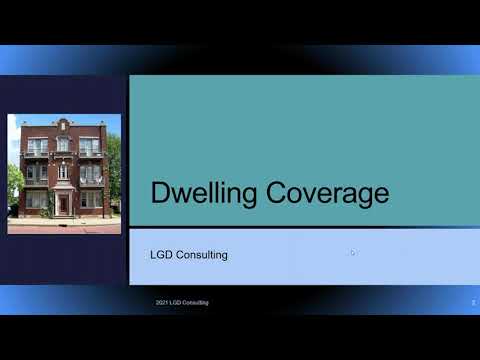Hello, folks! Owning a home is the American Dream, ain’t it? But without the right type of insurance coverage, it could morph into a nightmare. That’s where dwelling coverage comes in. It’s a little-known term, yet highly significant in the labyrinth of homeowners insurance. So, let’s dive in, crunch the numbers, and unscrew the ins and outs of dwelling insurance.

I. Understanding the Basics of Dwelling Coverage
What is dwelling coverage and its relevance in homeowners insurance?
Dwelling coverage, also known as dwelling insurance, is the main player in your homeowners insurance policy. It’s like the sturdy foundation of your home, providing the necessary financial protection for the physical structure of your property. Got hit by a hurricane? Or, perhaps a fire wreaked havoc in your cozy nest? In such scenarios, spend a moment to bless the existence of dwelling insurance. It shoulders the cost of repairing or reconstructing your home if damaged due to covered perils.
However, just like the icing on the cake isn’t the whole dessert, dwelling coverage isn’t the entire homeowners insurance. It does not cover your personal belongings, detached structures, or legal liabilities— you’ll need additional coverage for those. But, remember, without the cake (dwelling coverage), the icing (additional coverages) is pointless!

II. Embracing the Top 7 Steps for the Best Dwelling Policy
To make sure you’re well-armed with the best dwelling policy, follow these seven easy steps:
Step 1: Evaluate your dwelling insurance requirements
First things first! Take a look around your home and evaluate your insurance requirements. Consider the core elements: structure, fixtures, and internal systems. Compare different insurance providers and their offerings. Rome wasn’t built in a day, and a well-protected home isn’t either. So take your time.
Step 2: Understand what Coverage A entails for a dwelling policy
Don’t get bogged down by complex insurance jargon. Coverage A, an integral part of dwelling insurance, covers your main living areas, attached garage, built-in appliances, and more. Essentially, if it’s stuck to your home and can’t be removed without causing damage, it’s probably covered under Coverage A. But remember, your policy won’t make payments for damages from non-covered perils, such as earthquakes and floods.
Step 3: Get acquainted with the replacement cost estimate for your home
Under dwelling insurance, you’re covered up to the Replacement Cost Estimate (RCE) of your home. This gauges the cost of labor and materials in your locality to rebuild your specific home. Don’t confuse it with market value. Instead, think of this as a measure of rebuilding costs. Here’s your reality check: what you paid for your house years ago won’t cut the mustard today. So, keep your RCE updated.
Step 4: Analyze the coverage details meticulously
The devil is in the details! Dive into every clause, every exclusion, every exception in your policy. Misunderstandings and miscommunications about insurance could leave you high and dry when disaster strikes. Bookmark the reviews of lending tree to check candid and comprehensive reviews about different insurance providers.
Step 5: Perceive the market value versus the coverage amount
Here’s a nugget of wisdom: your home’s market value is not necessarily its insurable value. Market value considers factors such as your location, the worth of your land, and demand-supply dynamics. It’s relevant when buying or selling a home, but it’s rather a square peg in a round hole for insurance purposes.
Step 6: Educate yourself about the 3 types of coverage available in dwelling policies
General dwelling coverage policies offer three basic levels: actual cash value, replacement cost, and extended or guaranteed replacement cost. Choose wisely, my friends. Sure, lower premiums may look attractive, but would you be fully protected when misfortune strikes?
Step 7: Choose the best coverage option that suits your dwelling’s needs
The best dwelling insurance for you hinges on your specific needs and circumstances. Even within the same state, the requirements can vary—a coastal home in California might need different dwelling coverage than a hillside abode. To find the best policy for you, consider checking out the best banks California for a comprehensive comparison on insurance services.

III. Deep-Dive into Key Aspects of Dwelling Insurance
What does coverage A cover in a dwelling policy?
As previously mentioned, Coverage A includes the central structure of your home: walls, floors, ceilings, built-in appliances – essentially, anything that forms the mainspring of your home. Remember, the land your house stands on isn’t included in Coverage A. Essentially, if you could pick up your house and shake it, everything that remains fixed falls under Coverage A.
How is dwelling coverage calculated?
Your dwelling coverage amount is dipped and dyed in the hues of your home’s RCE. It’s a data-intense process, evaluating variables such as construction materials and methods, local labor costs, size of the house, and even architectural features. Say, marble countertops cost more to replace than Formica ones, right? That’s why you want to accurately calculate your home’s RCE to get appropriate dwelling coverage.

IV. Unraveling the Differences and Collateral Aspects
What is the difference between homeowners and dwelling insurance?
Dwelling insurance is your bodyguard against possible damages to your home, whilst homeowners insurance is a broader policy, encompassing coverage for personal property, liability, and additional living expenses. Think of homeowners insurance as an umbrella, with dwelling coverage forming the handle—it’s a vital part but doesn’t cover everything.


V. Final Musings: Making Informed Decisions on Dwelling Coverage
Importance of an adequate and comprehensive dwelling coverage policy
Here it is, folks: ensuring that you have an adequate and comprehensive dwelling coverage policy is your ticket to a peace-filled sleep. With the right policy, you’ll feel secure about your financial future, come what may. It’s immensely reassuring, knowing that your sweet home won’t turn into a financial pitfall if calamity strikes.
To conclude, a well-tailored dwelling coverage policy enables you to kiss the ground you walk on… or in this case, the home you live in! And for some exciting deviations, check out or explore the world of hot girls and celebritymoviearchive. You never know, you might uncover some helpful insurance advice from a celeb homeowner!
Folks, understanding your insurance needs and choosing the right coverage makes you not just a homeowner but a smart one. So, climb aboard this train of thought en route to an adequately insured dwelling, and, as Robert Kiyosaki advocates, make informed decisions. After all, your home is more than just walls and roofs—it’s your haven.


